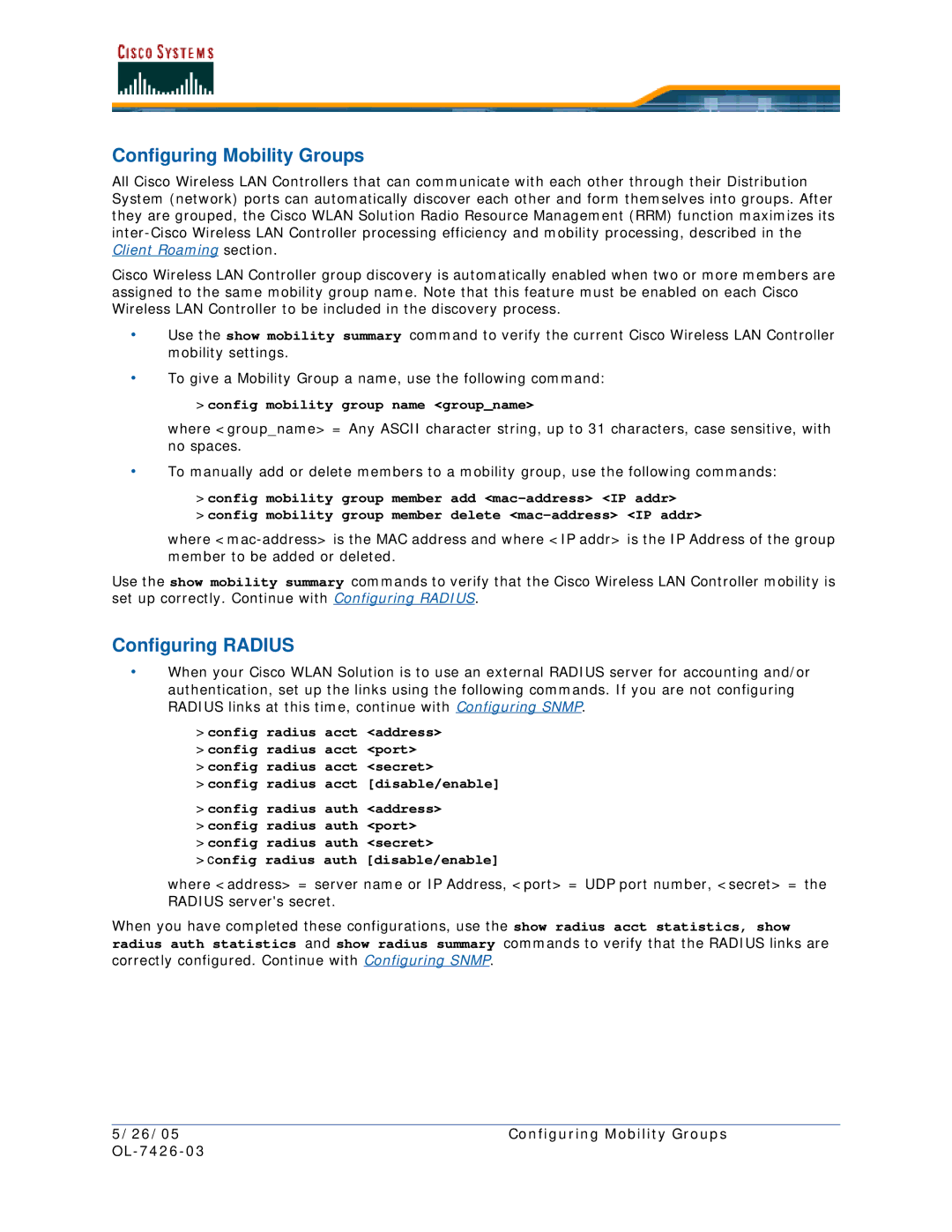
Configuring Mobility Groups
All Cisco Wireless LAN Controllers that can communicate with each other through their Distribution System (network) ports can automatically discover each other and form themselves into groups. After they are grouped, the Cisco WLAN Solution Radio Resource Management (RRM) function maximizes its
Cisco Wireless LAN Controller group discovery is automatically enabled when two or more members are assigned to the same mobility group name. Note that this feature must be enabled on each Cisco Wireless LAN Controller to be included in the discovery process.
•Use the show mobility summary command to verify the current Cisco Wireless LAN Controller mobility settings.
•To give a Mobility Group a name, use the following command:
>config mobility group name <group_name>
where <group_name> = Any ASCII character string, up to 31 characters, case sensitive, with no spaces.
•To manually add or delete members to a mobility group, use the following commands:
>config mobility group member add
>config mobility group member delete
where
Use the show mobility summary commands to verify that the Cisco Wireless LAN Controller mobility is set up correctly. Continue with Configuring RADIUS.
Configuring RADIUS
•When your Cisco WLAN Solution is to use an external RADIUS server for accounting and/or authentication, set up the links using the following commands. If you are not configuring RADIUS links at this time, continue with Configuring SNMP.
>config radius acct <address> >config radius acct <port> >config radius acct <secret>
>config radius acct [disable/enable]
>config radius auth <address> >config radius auth <port> >config radius auth <secret> >config radius auth [disable/enable]
where <address> = server name or IP Address, <port> = UDP port number, <secret> = the RADIUS server's secret.
When you have completed these configurations, use the show radius acct statistics, show radius auth statistics and show radius summary commands to verify that the RADIUS links are correctly configured. Continue with Configuring SNMP.
5/26/05 | Configuring Mobility Groups |
|
|
